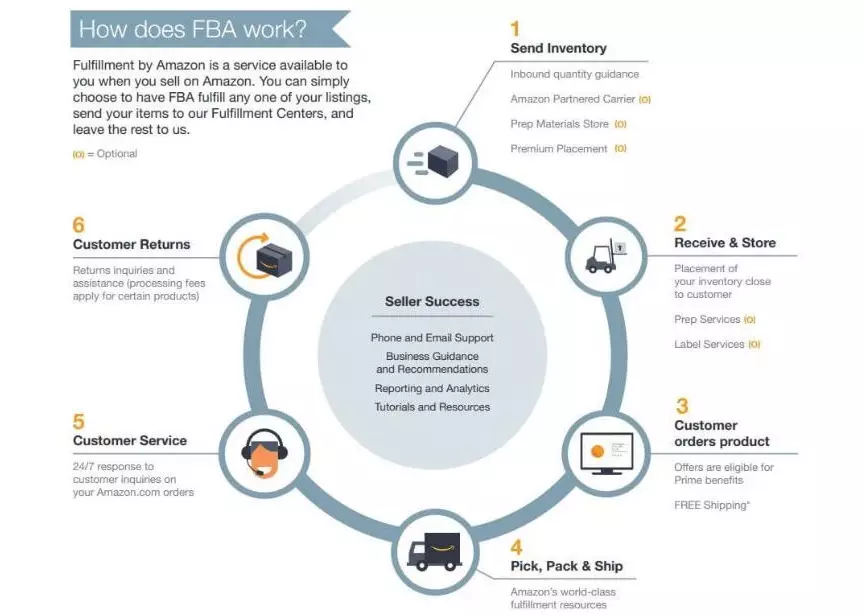Evaluation of Amazon Supply Chain Management
Question
Task: Work through these tasks for your Assessment 4.
Part A: Supply issues
- Identify and describe key product categories that the procurement department has to manage
- Research the supply market of the company and identify its suppliers (related to key product categories) as well as their geographical dispersion
- Assess the supply market and importance of sourcing items (or services) (use Kraljic, 1983)
- Research supplier selection, evaluation, and development practices and programs
- Research key supply-related challenges and opportunities in your company and industry
Part B: Operations issues
- Identify and describe your sales market and key customers of the company (including their geographical dispersion, importance to the company)
- Identify, discuss and evaluate demand forecasting techniques used by the company. Are different techniques used across the sales market? Why?
- Identity, discuss and evaluate inventory management techniques used by your company; Are different techniques used for different products? Why?
- Research demand and inventory management challenges of the company
Part C: Information issues
- Research for instances of bullwhip effect as well as their ‘causes’ and ‘remedies’ across the company’s supply chain (use Padmanabhan et al., 2009); discuss how this impacted the company’s supply chain capabilities
- Identify key information technology tools used across the company’s key supply chain business processes; explain how these IT tools impacted the company’s supply chain capabilities
- Identify collaborative practices used across the company’s supply chain (in relationship with both suppliers and customers)? Focus on one practice (for both supplier and customer side), discuss its implementation, challenges and opportunities, and impacts on the company’s supply chain capabilities
Part D: Integration issues
- Develop a comprehensive map of the company’s supply chain (using findings from Parts Aand B)
- Using the 9-step framework for design and assessment of supply chain integration, assess the company’s level of integration (collect relevant evidence for each step)
- Expand your assessment of step 3 drawing on key tenets of the Triple-A Supply Chain, i.e. agility, adaptability and alignment
Part E: Sustainability issues
- Identify key procurement and supply chain sustainability practices used by the company (see Pagell and Wu, 2009)
- Assess sustainability implementation and integration across the company’s supply chain drawing on the triggers model (both internal and external) (use Seuring and Muller, 2008)
Answer
Executive Summary
Amazon Supply chain management has reached to new heights with the competitive strategy of being the choice of retailer for the customers. Purpose of this report is to evaluate and assess supply chain management of Amazon. Combination of the multi-tier inventory, highly effective use of it, supportive transportation and wider warehoused network have geared towards supply chain management alignment with the competitive strategy. Amazon has outsourced product distribution and storage which cannot be ordered or purchased for the immediate delivery along with the products where the costs related to storing them exceed that of the marginal returns on sales. It is responsible for storing its ordered and purchased items in the individual warehouses so that it can appear to be responsive to customer needs and not compromising on that of delivery times and lead times. Segregation of inventory has helped in cutting costs. Amazon must integrate cooperation an collaborative model and must unify supply chain for better results.

Introduction
Vision, mission and strategic goals of company
Amazon Supply chain management strategy is depended on the good system of working being deployed by Amazon staff and Jeff Bezos. Amazon is responsible for optimizing each of the stage of its supply chain and launched delivery network, different automation technologies, drones and the hi-tech aspects in the context of whole patter. Supply chain management of the organization is depended on four points of technology, warehousing, manufacturing and delivery. Vision is to become the most significant customer-centric organization and building the place where individuals can discover and find anything they want online. Mission is also focused on customers (NJOKU & OU, 2015). Its strategic goals are becoming the top internet retailing organization and being committed to the mission.
Analysis
Findings of supply analysis
Amazon procurement process is responsible for managing include wearable accessories and video cameras, fitness products and equipments, specialized workforce solutions, electronic settlement services, optical components and devices. Applied Optoelectronics being headquartered in Texas develops, manufactures and designs optical devices, optic transceivers and optical devices. Wellnet Corporation provide Amazon authentication and electronic settlement services it is major business worldwide in payment, billing and publication through ATMs or point of sale registers or POS. based in Washington, TrueBlue offers Amazon with specialized workforce, fulltime sourcing for management and staff recruitment. GoPro being headquartered in California offers Amazon wearable accessories and video cameras. It offers the media content being created by the users for using in the advertisement. Nautilus, originated in Washington offers different range of fitness products. Supply market of Amazon is mainly based on Omni channel that is, offering the customers continuous and seamless experience of shopping (Jbara, 2018). Its supply market is integrated in distributing products to the homes in place of stores, management of Stock keeping Units, Shipping to the homes in parcels and running fulfillment centers. Role of sourcing helps in better design collaboration, efficient procurement transactions, better economic scale and implementing efficiency in /planning and forecasting. Amazon maintains supply chain standards for detection and evaluation of suppliers. Products are required to be manufactured and services must be provided din certain manner exceeding expectations of Amazon. MCDA approach model is implemented for helping the decision makers in decisions regarding supply chain operation development.
Strengths of Amazon Supply chain management include leveraging the brand recognition in the new segments and investing in the research and development department for thwarting operation industry and technology disruptions (How the Amazon Supply Chain Strategy Works, 2019). Weaknesses are investing into the customer-oriented services and supply chain and getting out of the business and focusing on growth areas.
Findings of operation analysis
Amazon has 1.3 million of the seller customers and the organization is trying to increase this customer base. It has developer customers using the Amazon web services that offer access to the technology infrastructure like hosting such developers for developing web services. Amazon has made the necessary transformation regarding the way they have communicated inventory demand to the vendors with the additional feature of Probability Level Demand Forecast. Based on the opinion of vendor operations manager at CPC strategy Eric Kauss this update has put burden for deciding the tolerance that they possess to carry inventory based on expected necessity from the company. Now the vendors are being forced to make the most critical decisions impacting directly Amazon stock levels. It has three inventory management techniques and these include vendor managed inventory, lean inventory management, third party logistics and warehouse management (Leblanc 2018). Amazon for managing all stocks needs warehouse management and 3PL and they require minimizing different areas of warehouse operations. In vendor management suppliers are responsible for restocking the products each time the product hits point for reorder. Lean Inventory management is considered as practice of having adequate inventory for keeping up with the demand yet not that much which can appear to be harmful for business.
Inventory management challenges are associated with supplier mistakes and process inefficiency. Suppliers are not reliable totally and many things can go wrong with the process of manufacturing and without being revised periodically supply processes of Amazon can remain inefficient. Running out of the stock and incorrect descriptions and pricing are other challenges.
Findings of information analysis
The impact of the demand fluctuations being amplified widespread in supply chain and such phenomenon of demand distortion phenomenon is bullwhip effect. This creates the unstable schedules for production and therefore it can appear to be highly exasperating for Amazon. They invest in the extra inventory, extra capacity and working overtime yet the store shelves for the popular items can be empty (Montgomery, 2018). Behavioral causes include if the demand of customer increases then demand to the upstream neighbor is increased further to cater to this increasing demand. For replenishing inventory demand of such upstream neighbor is increased. Operational causes include price fluctuation, rationing and the shortage gaming, demand forecast updating and order batching. Remedies to the Bullwhip effect include remedies to the order batching, collaboration, remedies related to price fluctuation.
Amazon has used countless of robotic solutions and automation for the purpose of Amazon Supply chain management. Amazon Robotics is responsible for packing and picking without the assistance from human and therefore it cam conduct warehousing faster. The organization has more than 100,000 of warehouse robots. It is also thinking about introducing drone-based delivery system delivering the five pounds of products within ten miles. Amazon has spent $775 million for acquiring all the automation robots and their investment in these robots have paid for itself through increasing productivity (Johnson, 2018).
Effective collaboration with the partners of the supply chain shares the important information in that of real time. It is important to create through that of near-transparent communication and the network of the collaborators for acting as the extension of efforts for getting the most appropriate product to that of right customers. Work of the organization with shipping changes necessitates collaboration with the suppliers making the supply chain the most significant area for initiating sustainable practices of business.
Findings of integration analysis
Amazon Supply chain management strategies include technology, manufacturing, delivery and warehousing. All of warehouses of Amazon are placed strategically near the population hubs and big metro cities, mini-warehouses are there in the smaller regions for ensuring the fact that supply can cater to demand (Shafiq, 2017). Warehouses are also internally optimized strategy of organization permits the pack-and-pack robots and team members for pulling products instantly. Amazon uses numbers of technologies for picking; packing, storing and stacking inventory and these solutions have developed delivery speeds and increased efficiency. Amazon offers the branded lines in the context of everything and this permits the organization to own whole of the lifecycle of the products.

Figure 1: Amazon Supply chain
(Source: Fish, 2015)
Regarding the customers, Amazon follows price differentiation strategy and divides them into segments for better delivery like free super saver delivery, one day delivery, prime customer delivery and first class delivery. In the context of supplier partnering Amazon has the biggest supplier range giving it more leverage. In inventory management, Amazon follows push-pull strategy where in push strategy inventory is held and in pull strategy order shipment is performed. Warehouses are properly placed for meeting customer demands. Transportation and storage depend on national parcel couriers.
In the context of Triple A Amazon has set new standards of agility. Through bullying the suppliers for pursuing rules related to delivery, take-back and packaging and conditioning the behaviors of customers the organization has made massive swathes of material handling landscape (Fish, 2015). It uses intermediaries in adaptability for the development of fresh logistics infrastructure and suppliers. For alignment, the organization exchanges knowledge freely with the customers and vendors.

Figure 2: Triple A model
(Source: Qazi et al. 2017)
Findings of sustainability analysis of Amazon Supply chain management
Amazon has proved to be the master in supply chain innovation with the passionate indulgence in implementing the drones in future, using the robots along with the advanced system of automation in the different distribution centers of the organization and excursion of the organization into the services of Uber-style logistics. Innovation appears to be the key ingredient for supply chain of Amazon. The organization is moving into the customer staples market and for doing this; it has established operations of dispatch inside the warehouses of suppliers. It has created vendor-flex program for creating that win-win situation (Qazi et al. 2017). It has taken the established concept related to vendor management inventory for making its entry into that of the new market which is more practicable and less expensive. The organization has sold its customers the staples or the commodities for which the online demand has been very low.
Based on the trigger model, Amazon has implemented push pull strategy for supply chain sustainability. Its warehouses are placed on the most strategic manner closer to the metropolitan areas as well as city centers. It can use the pull strategy while selling products to those of third party sellers (Rahmasari, 2016).
Amazon Supply chain management and procurement analysis
Dynamic alignment model
Dynamic alignment model has been used here or discussing procurement and supply chain analysis of the organization Amazon.

Figure 3: Dynamic Alignment model
(Source: Wattanutchariya, Tansuchat & Ruennareenard, 2016)
Architecting proper strategy is the necessity for establishing clear goals, accountabilities and structures which can drive the overall performance. Amazon has implemented game changing strategy. Customers have paid annual membership fee and received the confirmed two day of shipping on the hundreds of the numbers of products. Introduction of this two-day delivery has appeared to be the game changer and established dominance in the retail industry of online. Supply chain of the organization depends on the outsourcing of inventory management. more specifically, products are not ordered or purchased frequently not being stored in the Amazon warehouses regularly. 82% of the sales of organization include third party sellers. Amazon has developed different deliver options to the customers like one-day delivery, prime customer delivery, free super saver delivery and first class delivery (Banihashemi & Heydarnia, 2018). Continuous effort of the organization has made this organization the logistics giant. The organization has implemented push-pull strategy through building warehouses strategically near the city centers. It has used numbers of automations and advanced IT systems in its supply chain operations. The automation technologies are effective in performing all the tasks and responsibilities without any of human assistance. Robotics of this organization has the objective of bringing products to the people for picking of orders. It is capable of keeping supply chain cost minimum. Because of huge scale of economy and industry supply chain strategies it can provide its products to the customers in minimum cost.
Second aspect of this model is associated with enabling the employees for performing strategies through anticipative and flexible process, tools, resources and systems. Amazon Supply chain management is actually made of people working together for down streaming and up streaming product services and the flows for offering finished items to the customers (Chowdhury et al. 2016). Amazon though is well-aware of the significance of strategic management of the supply chains yet it is less likely to capitalize that fact that the successful management of supply chain stays on people performance in supply chain. Similarly, practitioners of the human resource have set certain practices and the processes that develop organizational and worker performance. In this context, Amazon is trying to reduce its number of workforce through implementing automation. It has also implemented training process for successful handling of the automating technologies yet it is important to understand that supply chain of Amazon must consider focusing on better collaboration for getting more successful management of people in supply chain management.
The third stage of this mode is associated with unlocking that potential of workforce and sustaining the employee enthusiasm through ensuring that the managers and the leaders are catering to the equity requirements and achievement needs of people. Supply chain managers in Amazon are engaged in different responsibilities for ensuring proper employee engagement and these include management, inventory control, analysis and planning, transportation an communication. Supply chain managers in the organization possess that ability of interacting professionally with different types of the people through email, phone, face-to-face communications and video conferences. They are responsible for negotiating transportation arrangement and shipping prices. Managers are responsible for performing risk evaluation on different things like supply trends, profitability of product, mitigating of at-risk product and the demand factors.
Fourth factor is associated with elevating management and leadership practices through conforming that the live values and constitute behaviors promoting the culture of partnership. Proper training is given in Amazon for skill development of managers (Greene, 2016).
Improvement programs
First, Amazon relies largely on different courier organizations like UOS and FedEx and in the recent years brand image of this organization has taken quite the hit due to that of the unreliability of the last mile connectivity or that of last portion of supply chain management which is quite visible to that of the end consumers. Second recommendation is associated with the feature of its bullwhip. This interprets the fact that the Amazon Supply chain management organization has effectively moving from that of the corporation model with the suppliers to that of the coordination mode. This is responsible for entailing information sharing between all of the partners and the suppliers using that of the latest technologies (Jahre, 2017). Third recommendation is associated with unification of the supply chain less than that of the gigantic information technology system in order to endure that there remains the higher visibility regarding each aspect of supply chain along with more of the transparency and accountability of this process. Amazon has outsourced some of its functions and this can result in the different issues of accountability. Therefore being aligned with the objectives Amazon must integrate all of the supply chain aspects from the end to end in only just a single system of IT in order to ensure that the bottlenecks are identified properly and can be acted upon properly.
Contribution of improvement programs for the accomplishment of vision, mission and strategic goals of the company
Though different components of supply chain management of Amazon appears to be effective enough and supplementing and complementing one another, part of this supply chain management where the consumers are responsible for communicating has quite appeared to be quite deficient in nature. Thus the organization is capable of actualizing and transporting superior delivery of last minute through creating its personal fleet of the delivery personnel and vehicles. In this way it can cater to the objective of offering the best of services to customers within time. Unified IT system can engage all stakeholders and suppliers of SCM and this can help in achieving the objective of increasing organizational efficiency.
Conclusion
Objective of this report is to assess and evaluate Amazon Supply chain management strategies. Amazon has realized behavior of customers towards online supply chain and this company realizes that customers purchasing from store require wide convenience and selection in quick servicing and purchasing. Ease of utilizing interface appears to be important and therefore the organization has kept the online business easy and simple. Amazon’s unique strategies of supply chain and the continual technological innovations have transformed already the way management of supply chain generally performs. With that of impending advances in the drones, robotics along with other autonomous vehicles, it has managed to get that advanced supply chain in the organization.
Amazon supply chain management assignments are being prepared by our supply chain management assignment help experts from top universities which let us to provide you a reliable best assignment help online service.
Reference List
Banihashemi, S. A., & Heydarnia, Z. (2018). A Hybrid Model for Evaluating Leagile Supply Chain Performance in Industry. Amazon Supply chain management. Journal of Industrial Strategic Management, 3(1), 43-54.
Chowdhury, M., Upadhyay, A., Briggs, A., & Belal, M. (2016). An empirical analysis of green supply chain management practices in Bangladesh construction industry.
Fish, L. (2015). Recommendations for Implementing Sustainability in New Product Development for Supply Chain Management. Business Research Consortium of Western New York: New York, NY, USA, 119.
Greene, C. A. (2016). Strategies for Reducing Supplier Risk: Inputs into the Supply Chain.
How the Amazon Supply Chain Strategy Works, (2019). Amazon marketplace. Retrieved from: https://www.cpcstrategy.com/blog/2018/07/amazon-supply-chain/. Accessed on: 24th MAY, 2019.
Jahre, M. (2017). Humanitarian supply chain strategies–a review of how actors mitigate supply chain risks. Journal of Humanitarian Logistics and Supply Chain Management, 7(2), 82-101.
Jbara, N. B. (2018). Risk management in supply chains: A simulation and model-based approach (Doctoral dissertation, Université Grenoble-Alpes).
Johnson T., (2018). How the Amazon Supply Chain Strategy Works. Retrieved from: https://www.cpcstrategy.com/blog/2018/07/amazon-supply-chain/. Accessed on: 24th MAY, 2019.
Leblanc R., (2018). How Amazon Is Changing Supply Chain Management. Retrieved from: https://www.thebalancesmb.com/how-amazon-is-changing-supply-chain-management-4155324. Accessed on: 24th MAY, 2019.
Montgomery O., (2018). Amazon Is a Supply Chain Management Pioneer: 3 Ways You Can Stay Competitive. Retrieved from: https://www.softwareadvice.com/resources/amazon-supply-chain-management/. Accessed on: 24th MAY, 2019.
Njoku, D., & Ou, K. A. (2015). Effective supply chain management: a strategic tool for profitability enhancement in the competitive marketing environment. European Journal of Business and Social Sciences, 3(12), 90-112.
Qazi, A., Quigley, J., Dickson, A., & Ekici, ?. Ö. (2017). Exploring dependency based probabilistic supply chain risk measures for prioritising interdependent risks and strategies. European Journal of Operational Research, 259(1), 189-204.
Rahmasari, L. (2016). Pengaruh supply chain management terhadap kinerja perusahaan dan keunggulan bersaing (Studi kasus pada industri kreatif di Provinsi Jawa Tengah). Majalah Ilmiah INFORMATIKA, 2(3).
Shafiq, K. (2017). Supply chain management, text and cases by: vv sople. Pakistan Business Review, 17(3), 725-730.
Wattanutchariya, W., Tansuchat, R., & Ruennareenard, J. (2016, March). Supply chain management of thai parboiled rice for export. Amazon Supply chain management. In Proc. of the 2016 International Conference on Industrial Engineering and Operations Management.
Get Top Quality Assignment Help and Score high grades. Download the Total Assignment help App from Google play store or Subscribe to totalassignmenthelp and receive the latest updates from the Academic fraternity in real time.












